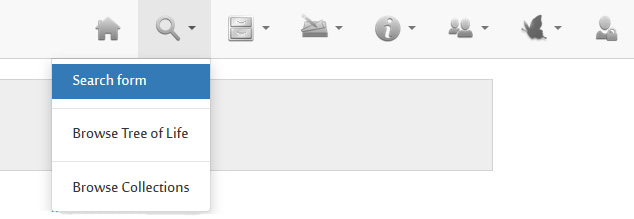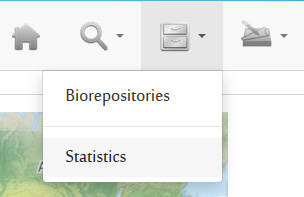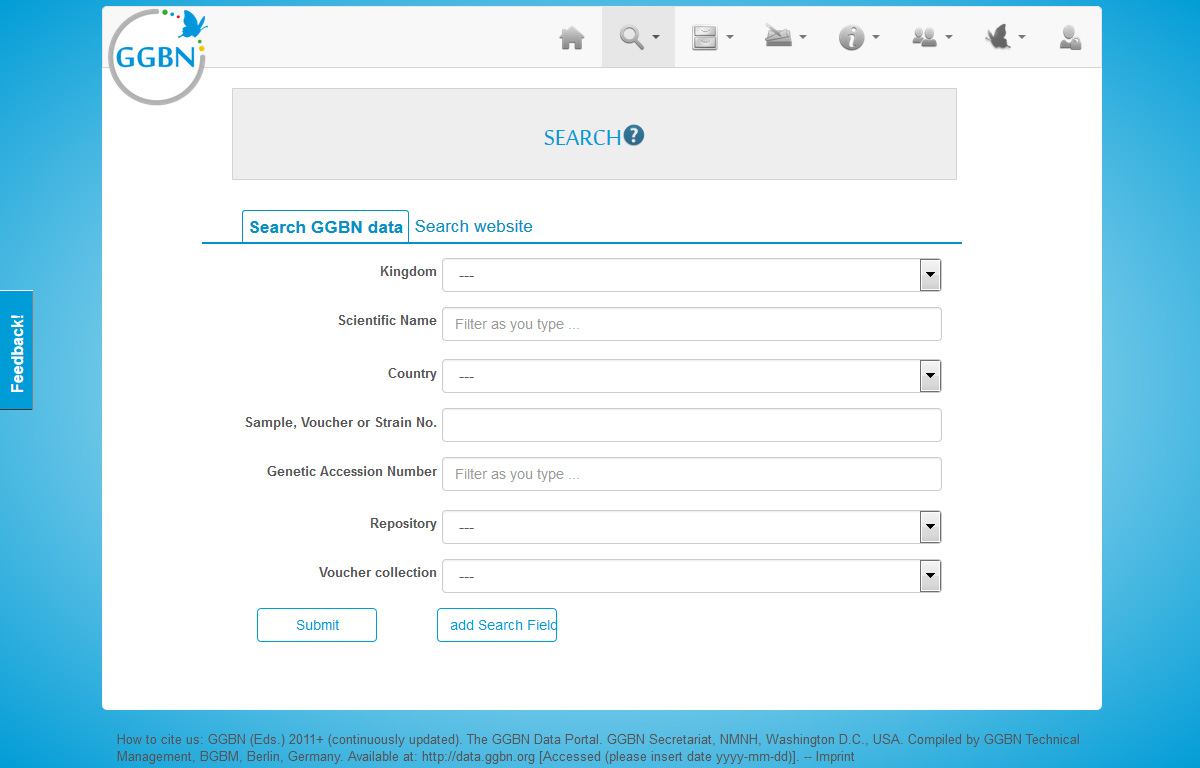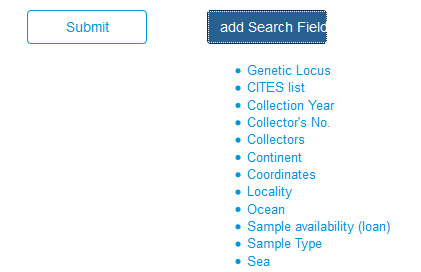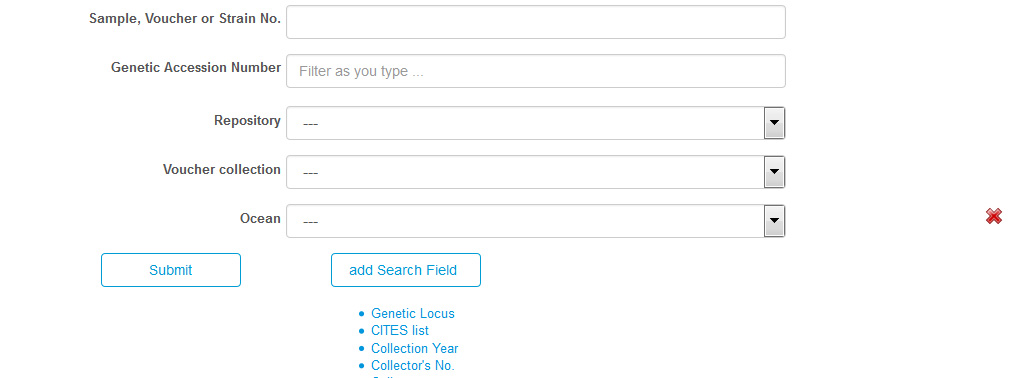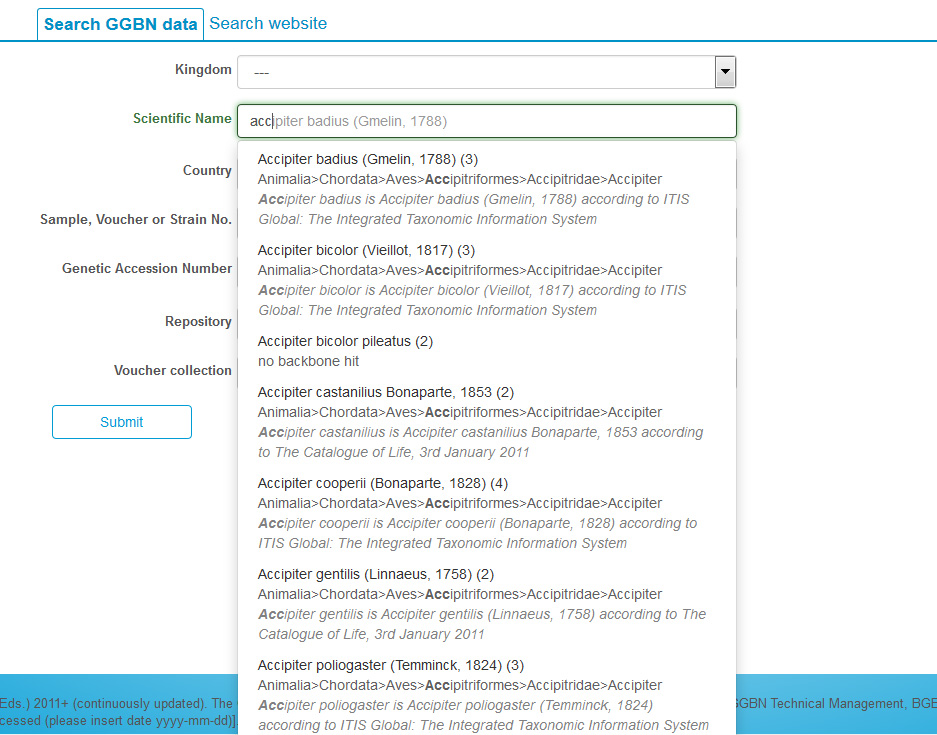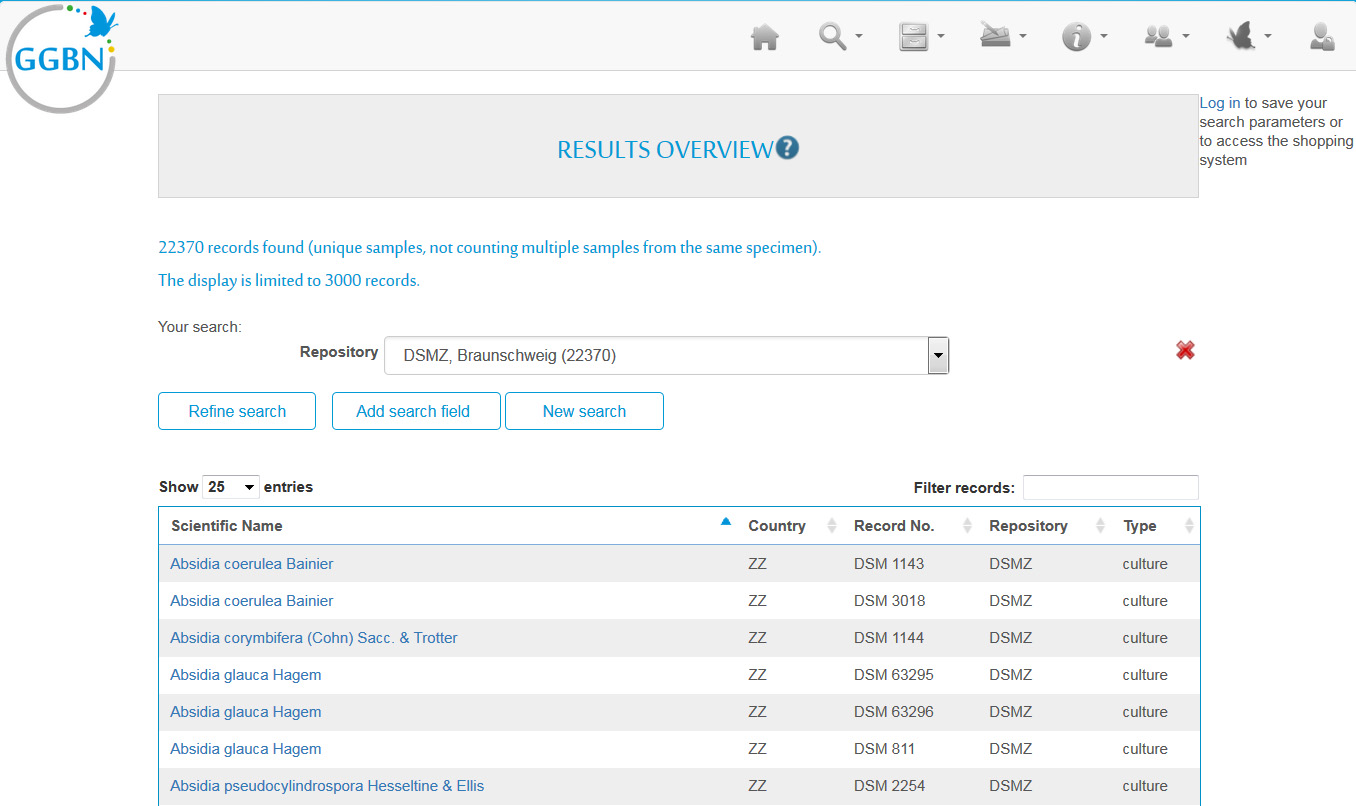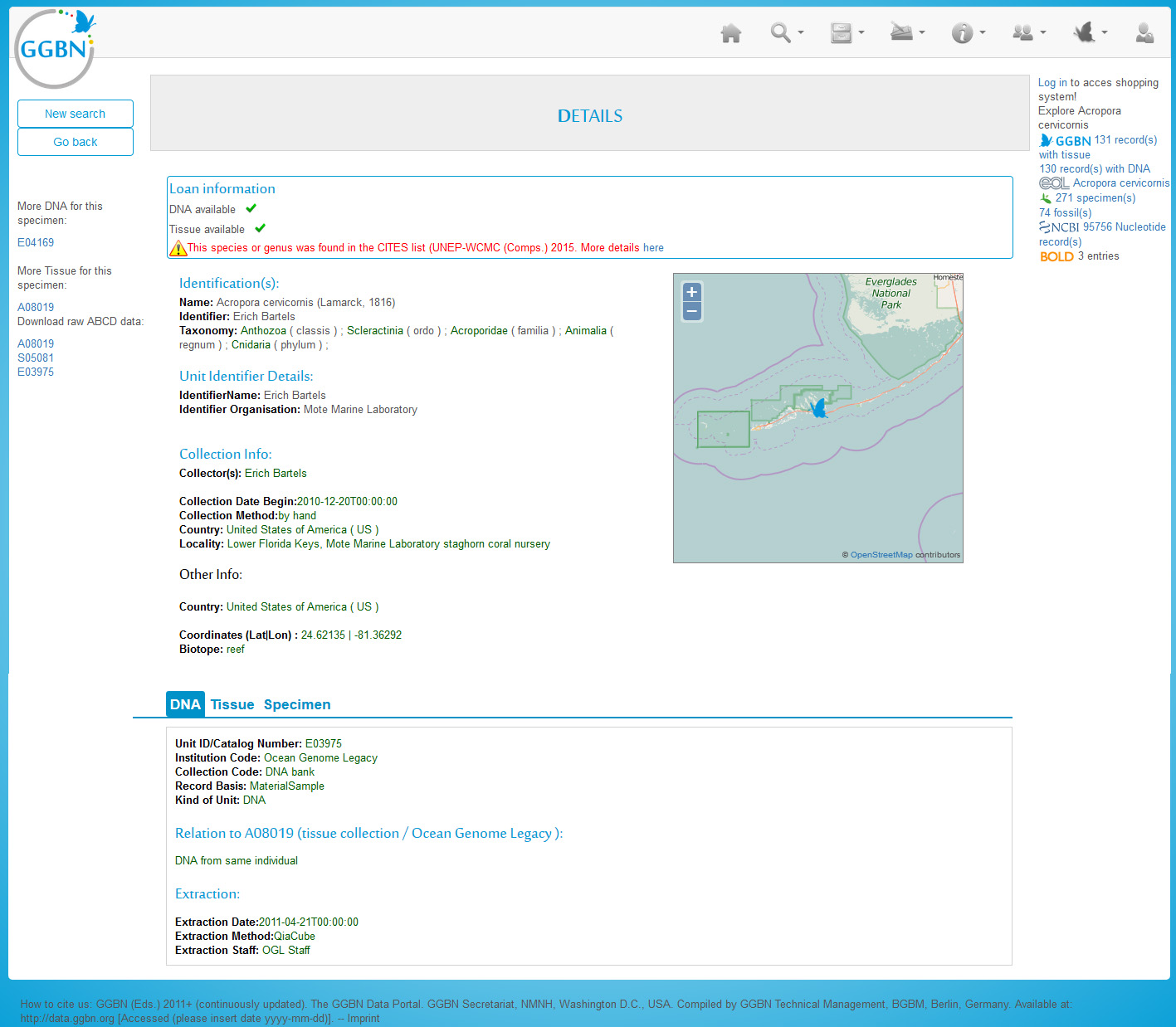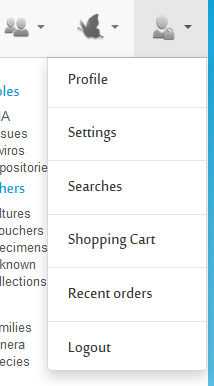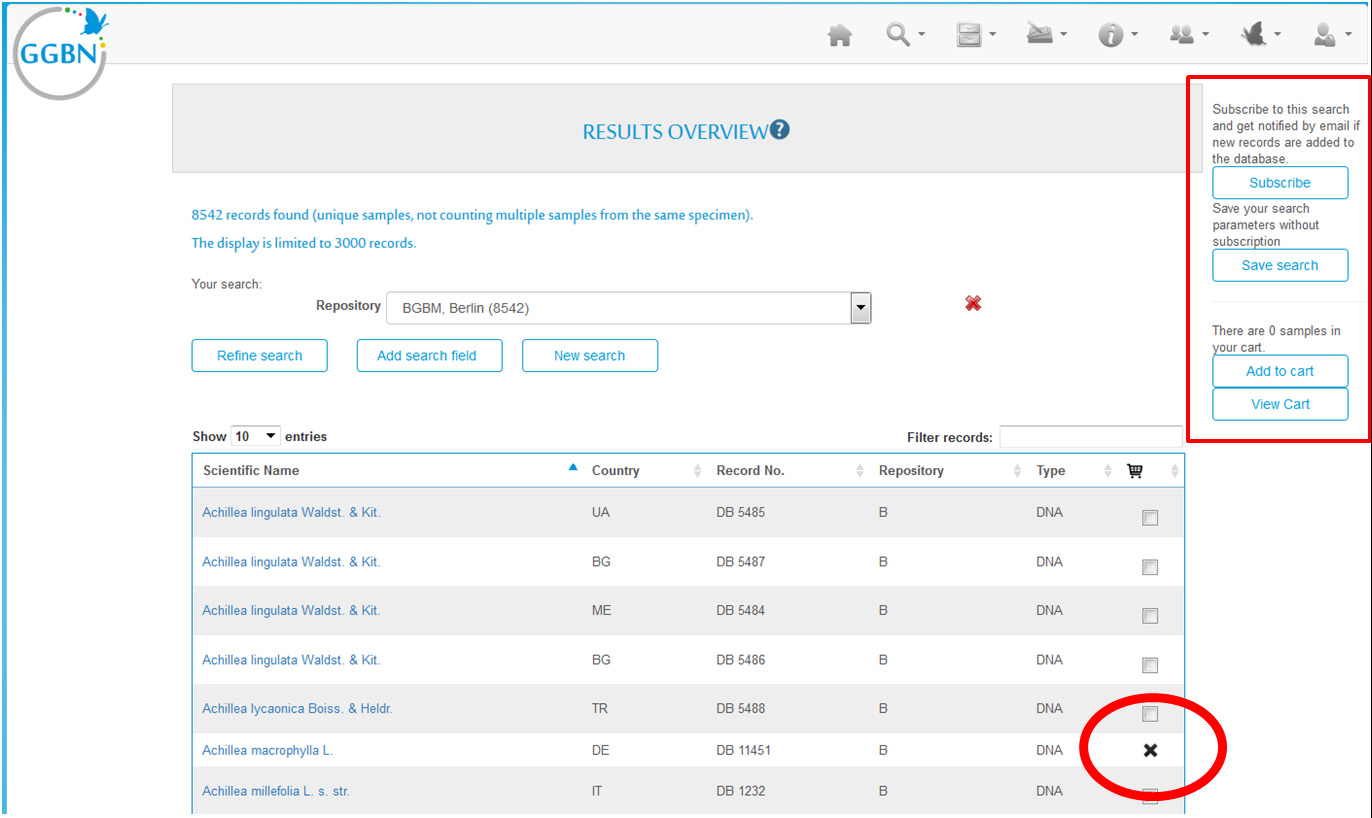GGBN Data Portal Explanations
Contents
Background
We use the Berlin Harvesting and Indexing Toolkit (B-HIT) to harvest GGBN provider data. The records (or units) can be harvested from providers having either a BioCASe or an IPT installation. For BioCASe providers, the schemata ABCD 2.06, ABCD 2.1, ABCDDNA, ABCDGGBN and ABCDEFG are supported (single records or ABCD Archives). For IPT providers, DarwinCore Archives are supported, including the GGBN extensions. Elements that are indexed are listed under http://wiki.bgbm.org/bhit/index.php/Indexed_fields.
The search features can be found under magnifying glass icon. You can use three options to search within the GGBN Data Portal:
- Search by fields
- Browse the tree of life
- Browse collections
Furthermore you can check out statistics of GGBN online collections.
Data Quality and Data Cleaning
During harvesting GGBN provider data are checked and cleaned if necessary. We keep the original provider data in addition to cleaned versions. Data quality tests are done using B-HIT. Country names are translated in English, ISO codes are compared to the country names, coordinates are validated and checked again both ISO code and country name. In case of incomplete data, the tool is looking into the namedareas and localities and tries to extract some information regarding the country or the water body.
Scientific names are parsed using the GBIF Name Parser (http://www.gbif.org/developer/species#parser) and customized regular expressions.
Taxonomic Backbone
After harvesting the scientific names are matched against certain checklists of the GBIF checklist bank. Higher taxa, synonyms and accepted taxa are retrieved, also using the GBIF Checklistbank webservice (http://api.gbif.org/v1/species). These checklists include: Catalogue of Life, NCBI and the GBIF backbone itself. In addition we match the names against the Prokaryotic Nomenclature up-to-date (PNU) web service, provided by the DSMZ.
Search by fields
Here you can choose different parameters to filter your results. The upper part contains parameters often used by researchers and curators. In addition you can add further parameters (click on "add search field"). We distinguish between GGBN repositories (DNA and tissue banks) and voucher collections. The latter can also be non-GGBN instutions.
Most of the fields are drop down lists or include suggestion lists to help you. E.g. when typing a name the portal searches for all synonyms and accepted names matching your search term and provides a suggestion list with detailed information about the name found in the GGBN backbone.
Edit your search
Your results are displayed in a hitlist. You can change the filters at any time. Just select further parameters from "add search field" or delete some using the red cross. To see the new results click on "Refine search". You can also change the order of the columns by clicking on the little arrows. To see the details of a record click on the blue scientific name.
Record detail
The record details page aggregates data from multiple sources. Here you see an example with DNA sample, Tissue sample and Specimen. These data are coming from up to three different datasources, depending on where the samples and data are deposited. On top you find information about loaning availabilities and conditions. Furthermore it is checked whether the taxon is listed on CITES. Left to the map you find collecting information and determination details. In the lower part you see different blue tabs with information about the physical samples and where to find them.
On top right information about the taxon are retrieved live from external sources, such as GBIF, NCBI, BOLD and EOL. In addition you see how many further samples for this taxon can be found at GGBN.
On the left you find information on samples at GGBN that are from same population or same individual as this one.
In case sequences, publications or multimedia items are provided, further tabs will appear.
Order samples/Login feature
To order samples or subscribe to searches you must register as a user. To do so click on "log in" or the little human in the menu. We appreciate if you fill out the complete contact information, since these data can then be forwarded to the sample holding institution, but this is not mandatory.
After login a menu will appear under the human icon.
Profile
Change your personal information here.
Settings
Personal settings for the hitlist can be defined here.
Hitlist When logged in the hitlist shows an additional column to add samples to the cart. If a sample if not available for loaning for some reasons there is an 'x'. On top right appear buttons to subscribe to this search (and get informed via email if new records are available) as well as to save this search.
